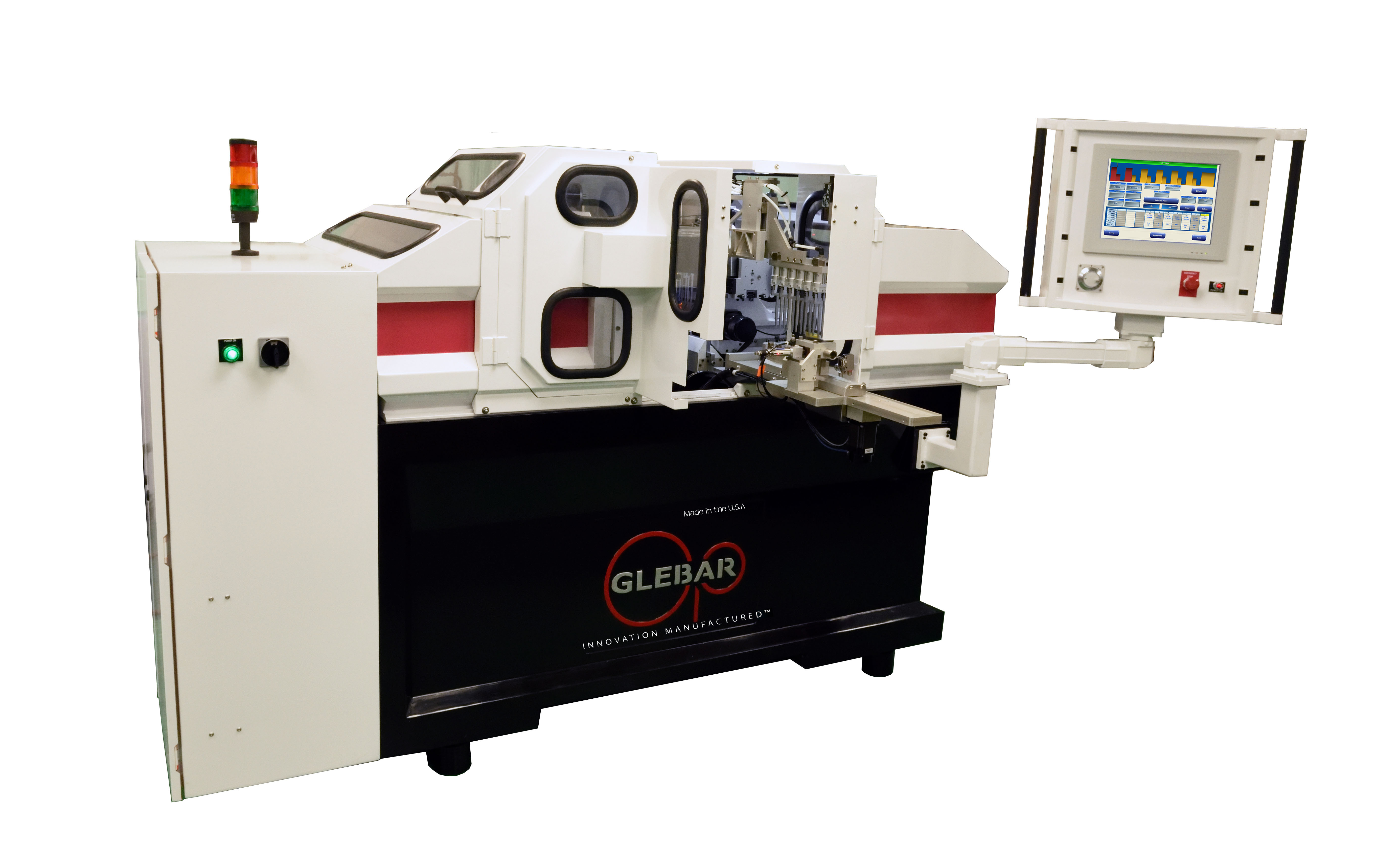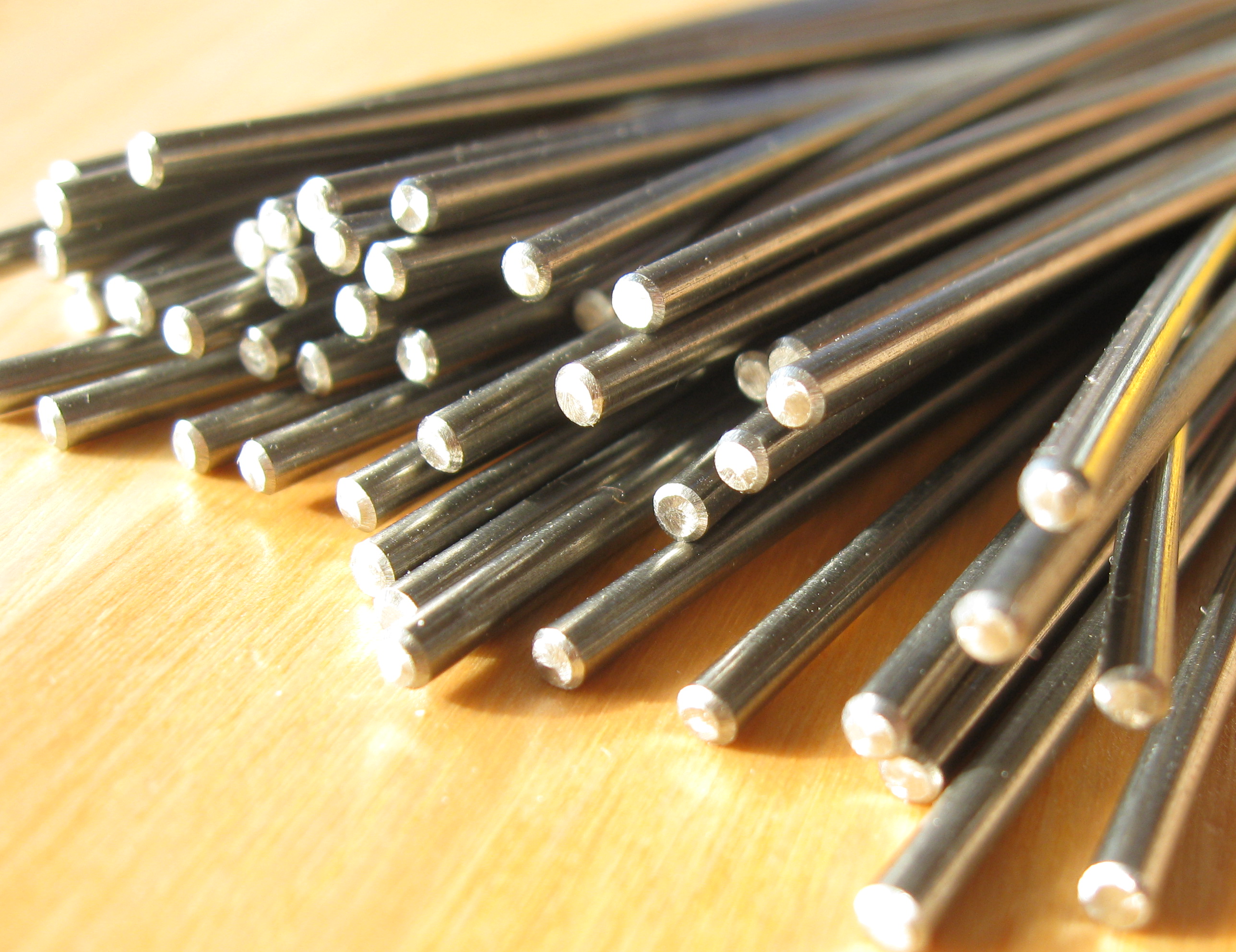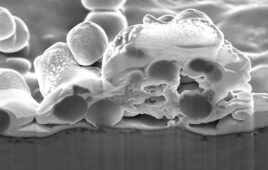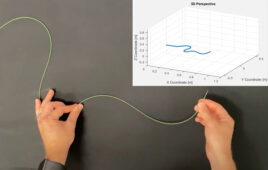Traditionally, the manufacture of arthroscopic shavers required multiple steps of various methods to grind one shaver at a time. Glebar Company has revolutionized that method to provide a more streamlined process with a faster cycle time, drastically improving customer output.
Glebar is known for its standard platform of modular machine systems, which can be configured to provide custom solutions for its customers, across a wide breadth of industries. Recently, a medical device manufacturer was looking to improve its production of arthroscopic shavers. Its existing process required various manufacturing steps, meaning multiple machine setups, resulting in unwanted downtime. This process could not meet its specific goals, so the company turned to Glebar for assistance.
The Anatomy of Arthroscopic Shavers
Arthroscopic shavers are used for the resection of tissue in joint surgeries. A minimally invasive alternative to traditional surgeries, arthroscopic surgeries allow surgical tools to be used in joint cavities with only a small incision, without fully opening the joint. Fluid is then used to irrigate and distend the joint to allow room for surgery. This causes a reduction in stress on the surrounding tissues and shorter recovery times for patients.
In manufacturing arthroscopic shavers, two tubes are assembled, with as minimum a gap between the two parts as possible—sometimes as small as 0.0005”—so that the inner tube moves freely inside the outer tube without allowing debris to get caught between the surfaces, particularly at the tip of the part. The tips of the tubes usually have a rounded guiding surface, and the outer tube has a window cut in it to expose the sharp edges of the inner tube. Both are difficult to manufacture in volume.

Glebar’s GT-610 CNC is able to grind multiple medical components per cycle, at great speeds and within a smaller footprint.
Manufacturing Rx
After a careful review of the company’s requirements, Glebar recommended its GT-610 CNC centerless grinding machine and P4K gauging system as a solution. Glebar’s servo-controlled movable work rest blade assembly, an integral part of this system, ground the tip of the shaver to the manufacturer’s specification. The movable work rest was programmed to automatically position itself along its axes of motion from a load/unload position for the feeding of parts, to a start grinding position for the initial grind, to a final varied grind position to generate the ellipses, and then back to the load/unload position to release the finished parts.
The ability of the lateral work rest blade to position itself at changing speeds along different axes was key to grinding the tip to the exact specifications. In addition, on the GT-610 CNC, the parts are gantry fed from a walking beam step feeder, and the final ground parts are placed into a finished goods tray.
Using the Glebar GT-610 CNC to infeed grind the shape of the inner tube, a +/-0.0002” tolerance was maintained on the tip dimensions. At the same time, 3-diameter features were ground to within 0.0002” per diameter, maintaining a TIR of 0.0001” and producing a smooth 9 Ra surface finish on 304V Stainless steel with a +/-0.001” wall thickness. Glebar was then able to remove 0.012” in stock for the majority of the part and 0.004” off the tip geometry. The entire fully automated process was done in approximately 20 seconds, adjusting for part length variation, heat expansion, and a near zero tip geometry tolerance requirement.
Another challenge in grinding the tips of arthroscopic shavers is the traditionally high scrap rate due to geometrical imperfections, which can happen during the grind cycle or in loading or unloading. By combining Glebar’s movable work rest assembly with its intuitive CNC work wheel dresser with custom radius compensation programming, Glebar was able to significantly reduce scrap rates, as well as eliminate an extra step from the previous manufacturing method which had left unacceptable tool marks on the tip surfaces.

The Glebar P4K gauging system can scan all parts in a cycle and feed back to the GT-610 CNC, automatically correcting wheel dress shape for the complete profile geometry of the part.
To grind the outer sleeve of the shaver, Glebar’s GT-610 thrufeed grinder is used to grind the outer diameter of the blank tubes, maintaining a surface finish between 3-6 RMS and maintaining a comfortable 2-3 Cpk on the outside diameter of the part. Material removal of 0.005” with a tolerance requirement of +/-0.0005” was met easily in a fully automated turnkey process.
To measure the parts under the previous manufacturing methods, a variety of tools were used, from handheld micrometers to 50 power overlays on an optical comparator. By incorporating the Glebar P4K measurement system, a product can be placed on a fixture, and with a single key stroke, the entire part can be measured and all features checked resulting in a quick pass/fail. Another benefit of the P4K is the closed loop machine feedback. The P4K measures the part and feeds back to the GT-610 CNC, and the appropriate offsets to the work wheel dress file bring all parts to nominal dimensions. Diameter, including taper and radii, are fed back to the machine, correcting wheel dress shape automatically for the complete profile geometry in a matter of seconds, drastically reducing setup time and improving quality control. Where diameter compensation is the only adjustment needed, the system feeds back slide position to reposition the regulating wheel.
Summary
The improvements Glebar created in the manufacture of arthroscopic shavers, incorporating the latest grinding technologies and gauging capabilities, all made a significant impact. The GT-610 CNC condensed multiple manufacturing steps, grinding the entire tip and multiple diameters in one operation. A continuous run of over eight hours of production yielded one diameter adjustment of 0.0001″. The setup from one part family to another, including changing the work wheel, is now under two hours, a reduction in time of approximately 70 percent.
Glebar focuses on process improvement. In this case, Glebar provided just that. The Glebar GT-610 CNC was instrumental in transforming a multiple step process into a streamlined, efficient method of manufacturing that traded setup time for additional production time.
This article appeared in the March 2016 print edition of MDT.




